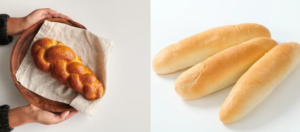Unlock the secret: how corn flour revolutionizes baking
What To Know
- Corn flour, also known as cornstarch or corn starch, is a fine, powdery substance that is naturally gluten-free and adds a distinct texture to baked goods.
- Corn flour can add a delicate crispiness to crusts and a soft, crumbly texture to cakes and cookies.
- In a pinch, you can substitute corn flour with other starches, such as arrowroot or potato starch, in a 1.
Corn flour, a versatile ingredient derived from finely ground corn kernels, has long been a staple in the kitchens of home bakers and culinary professionals alike. Its unique properties make it an indispensable ingredient for achieving a wide range of textures and flavors in baked goods. In this comprehensive guide, we will delve into the world of corn flour, exploring its uses, benefits, and the secrets to incorporating it seamlessly into your baking creations.
The Wonders of Corn Flour
Corn flour, also known as cornstarch or corn starch, is a fine, powdery substance that is naturally gluten-free and adds a distinct texture to baked goods. It is primarily composed of starch, which gives it its thickening and binding properties. When heated, corn flour gelatinizes, forming a thick, translucent gel that adds body and structure to various culinary preparations.
Benefits of Using Corn Flour in Baking
Incorporating corn flour into your baking repertoire offers numerous advantages:
- Thickening Agent: Corn flour acts as an effective thickener for sauces, gravies, and custards, providing a smooth and velvety texture.
- Binding Agent: It helps bind ingredients together, creating a cohesive and sturdy structure in baked goods.
- Texture Enhancer: Corn flour can add a delicate crispiness to crusts and a soft, crumbly texture to cakes and cookies.
- Moisture Control: It absorbs excess moisture, preventing baked goods from becoming soggy or dense.
- Gluten-Free Alternative: As a gluten-free ingredient, corn flour is an excellent choice for those with gluten sensitivities or allergies.
How to Use Corn Flour in Baking
Using corn flour in baking is straightforward, but a few key techniques ensure optimal results:
- Mixing: Combine corn flour with a small amount of cold liquid (e.g., water or milk) to form a slurry before adding it to the main batter or mixture. This prevents lumps from forming.
- Heating: Heat corn flour mixtures gradually to prevent scorching. Bring them to a boil, then reduce heat and simmer until thickened.
- Proportion: The amount of corn flour used will vary depending on the desired consistency. Start with a small amount and gradually increase until you achieve the desired thickness.
Corn Flour in Various Baking Applications
Corn flour’s versatility extends to a wide range of baking applications, including:
- Thickening Sauces and Gravies: Use corn flour to thicken sauces, gravies, and soups, creating a rich and velvety consistency.
- Binding Agents: It acts as a binder in baked goods such as cakes, muffins, and cookies, enhancing their structure and preventing crumbling.
- Pie Crusts: Corn flour added to pie crusts creates a tender and flaky texture.
- Cornbread and Muffins: It adds a characteristic crumbly texture to cornbread and muffins.
- Gluten-Free Baking: Corn flour is an essential ingredient in gluten-free baking, providing structure and texture to baked goods.
Tips for Working with Corn Flour
- Avoid Overmixing: Overmixing corn flour mixtures can result in a gummy or slimy texture.
- Use High-Quality Corn Flour: High-quality corn flour will yield better results than low-quality substitutes.
- Experiment with Different Blends: Combining corn flour with other starches, such as tapioca or potato starch, can create different textures and consistencies.
- Substitute Corn Flour: In a pinch, you can substitute corn flour with other starches, such as arrowroot or potato starch, in a 1:1 ratio. However, keep in mind that the resulting texture may vary slightly.
The Secret to Perfect Corn Flour-Based Baked Goods
Mastering the art of using corn flour in baking requires attention to detail and a touch of culinary finesse. Here are a few secrets to elevate your baked creations:
- Use the Right Ratio: Experiment with different ratios of corn flour to achieve the desired consistency and texture.
- Avoid Scorching: Heat corn flour mixtures gradually over low heat to prevent scorching.
- Whisk Constantly: Constant whisking ensures a smooth and lump-free mixture.
- Cool Before Using: Allow corn flour mixtures to cool slightly before incorporating them into other ingredients.
- Practice Makes Perfect: With practice, you will develop a keen understanding of how corn flour behaves and how to use it effectively.
Conclusion: Embracing the Versatility of Corn Flour
Corn flour is a versatile and indispensable ingredient that adds texture, structure, and binding properties to baked goods. By understanding its unique characteristics and incorporating it with precision, you can elevate your baking skills and create delectable treats that will delight your taste buds. So, embrace the magic of corn flour and experiment with its endless possibilities in your culinary creations.
Frequently Asked Questions
Q1: Can I substitute corn flour with wheat flour in baking?
A1: No, corn flour cannot be directly substituted for wheat flour in baking due to its different properties. Corn flour is gluten-free and has a different thickening power than wheat flour.
Q2: How do I prevent corn flour mixtures from becoming gummy?
A2: To avoid a gummy texture, avoid overmixing corn flour mixtures. Heat them gradually over low heat and whisk constantly to prevent lumps from forming.
Q3: Can I use corn flour to thicken cold liquids?
A3: No, corn flour needs to be heated to activate its thickening properties. It will not thicken cold liquids effectively.
